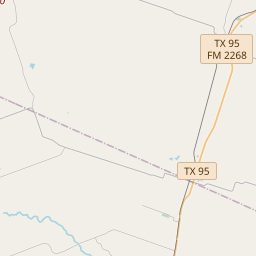Site of Bartlett Colored School
Historical marker location:






Site of Bartlett Colored School
The farming community of Bartlett was founded in 1882 when the Missouri, Kansas & Texas Railroad reached the town, which is situated on the county line between Bell and Williamson counties. By 1912, a second railway served the town, and Bartlett became a shipping point for area farm and ranch products.
When the Bartlett Public School built a brick schoolhouse in 1909, the school district moved its existing six-room frame classroom building to this site to become the first local school for African American students. When the six-room schoolhouse burned in 1919, Dave Johnson was given the contract to build a new one-story, four-room structure using recycled lumber. Decades later, in 1945, half of a building from the Goodeville School District was moved to the site to serve as a shop and vocational agriculture building.
The Bartlett Colored School, unaccredited at that time, only went through the tenth grade; few students from area rural populations could get to the schoolhouse, and fewer still made the trip to Temple or Austin to complete their education and graduate. Parents and teachers, united through a parent teacher association formed in 1933, continued improvements and attracted a dedicated couple from Prairie View A&M to move to Bartlett in 1946. Gentry "Prof" Powell, Sr. (1909-1976), and his wife acted as principals, teachers and coaches. They brought in students from the area with a school bus and driver granted by the school district at the start of the 1946-47 school year. By summer 1947, attendance had doubled to more than 160, and the school became an accredited 12-grade system. With a strong curriculum and new sports programs, the Bartlett school grew, moving in 1949 to the north side of the city, on Cryer Drive. (2003) [1st extra plaque]
Dedicated principals who served at Bartlett Colored School included G. B. Blackburn (1909-1911) S. E. Cooper (1911-1945) and John R. Powell, Ph.D. (1945-1946)
[2nd extra plaque]
Under Marguerite C. Powell, Principal 1947-1965, the 10-grade, unaccredited system became a Class B, Accredited 12-grade school and in May 1949 held first graduation ceremonies
As one of the most visible programs of the Texas Historical Commission (THC), historical markers commemorate diverse topics in Texas history, including: the history and architecture of houses, commercial and public buildings, religious congregations, and military sites; events that changed the course of local and state history; and individuals who have made lasting contributions to the state, community organizations, and businesses.
The Johnson Space Center, located in Houston, played a crucial role in the development of the U.S. space program. It was here that NASA trained its astronauts and mission control teams, and it continues to be an important center for space research and exploration today.
The region was first settled by European pioneers in the mid-19th century. The establishment of Fort Tumlinson in 1839 provided protection to settlers, and the population grew steadily with the arrival of more immigrants in search of new opportunities. In 1848, the county was officially organized and named after Robert McAlpin Williamson, a judge and soldier in the Republic of Texas.
During the Civil War, Williamson County faced significant challenges. Many residents joined the Confederate Army, and the county became a hotbed of conflict due to its location on the frontier between Union and Confederate territories. After the war, the area was able to rebuild and experienced a period of economic growth, driven by agriculture, cattle ranching, and the emergence of small towns and rural communities.
In the 20th century, Williamson County continued to develop and adapt to changing times. The discovery of oil in the early 1900s brought economic prosperity to the region, and the county experienced a boom in population and infrastructure. Today, Williamson County is a thriving part of the greater Austin metropolitan area, known for its strong economy, vibrant communities, and commitment to preserving its historical roots.
Williamson County Timeline
This timeline provides a concise overview of the key events in the history of Williamson County, Texas.
- 1804 - The area that is now Williamson County is settled by Native American tribes, including the Tonkawa, Lipan Apache, and Comanche.
- 1836 - Texas gains independence from Mexico.
- 1838 - The Texas legislature establishes Williamson County, named after Robert McAlpin Williamson, a leader in the fight for Texas independence.
- 1848 - The Mexican-American War ends and the Treaty of Guadalupe Hidalgo is signed, officially establishing the Rio Grande as the boundary between Texas and Mexico.
- 1850 - The population of the county reaches 1,027.
- 1876 - The Texas State Capitol building is completed in Austin, which becomes the seat of government for Williamson County.
- 1881 - The International-Great Northern Railroad reaches Georgetown, bringing economic growth and development to the county.
- 1907 - The county courthouse, located in Georgetown, is completed.
- 1930s - The Great Depression hits Williamson County, causing a decline in the local economy.
- 1950s - The county experiences a period of growth and prosperity, with the population increasing significantly.
- 1990s - Development and suburbanization accelerate in Williamson County, with the county becoming one of the fastest-growing areas in the United States.